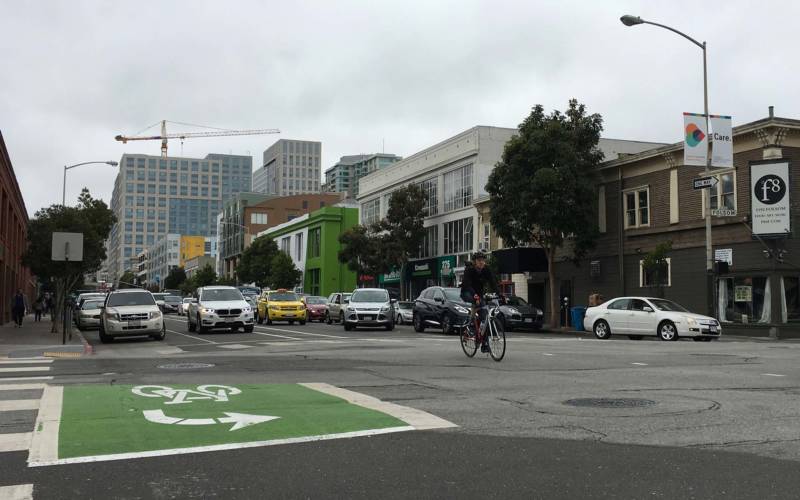San Francisco Mayor Ed Lee issued an executive directive Thursday calling on the city's transportation agency to speed up and enhance some projects to make streets safer to walk and bike, including improvements to streets where two bicyclists were killed on the same day in June.
The directive calls on the San Francisco Municipal Transportation Agency to make "all infrastructure implemented on the city-designated high-injury network to be the highest achievable quality," including protected bike lanes, which physically separate cars and bikes.
More than 125 miles of streets have been identified as high-injury corridors under the city's Vision Zero program, which has the goal of ending all traffic deaths by 2024. Lee is calling on the SFMTA to increase the goal of annual Vision Zero projects from 13 to 18 miles a year.
Bike advocates have been arguing that protected bike lanes should be the new standard, which studies have shown draw more people to bicycling because they are safer and more pleasant to ride on. They say standard bike lanes, especially on busy streets, are often filled with double parkers and delivery trucks, creating conflicts and sometimes forcing bike riders into speeding traffic.
The directive calls on the SFMTA to implement three protected bike lane projects within nine months, including on Eighth Street and on Seventh Street, where 26-year-old Kate Slattery was killed by a hit-and-run driver while riding her bike June 22.
